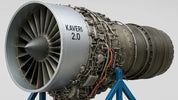
🚀 India’s Kaveri Jet Engine: Challenges, Progress & What the Future Holds
, by PC Bazaar, 5 min reading time

, by PC Bazaar, 5 min reading time
The Kaveri engine is one of India’s most ambitious aerospace projects—an indigenous jet engine designed to power fighter jets and reduce dependence on foreign propulsion systems. While it faced significant delays and challenges, renewed interest from strategic programs like the AMCA and UAV projects has put the Kaveri back in the spotlight.
Developed by the Gas Turbine Research Establishment (GTRE) under DRDO, the Kaveri engine is a low-bypass turbofan engine initially intended to power the HAL Tejas fighter. It has since evolved toward powering UAVs and possibly being modified for the upcoming AMCA stealth fighter.
| Year | Milestone |
|---|---|
| 1986 | Kaveri project approved by the Indian government |
| 1996–2004 | Initial test runs; challenges with thrust and reliability |
| 2010 | Project declared unfit for Tejas MK1 |
| 2016 | Collaboration with Safran (France) proposed |
| 2023 | Kaveri Dry variant tested for UAVs |
| 2025+ | Potential integration with AMCA (non-afterburner variant) |

| Engine | Country | Thrust (kN) | Application |
|---|---|---|---|
| Kaveri | India | 81 (target) | Tejas, AMCA (future) |
| F414 | USA | 97 | Tejas Mk2, AMCA (initial) |
| WS-13 | China | 86 | JF-17 Thunder |
| AL-31 | Russia | 123 | Sukhoi Su-30MKI |
In early 2024, the hashtag #FundKaveri started trending on X (formerly Twitter), driven by the Indian tech and defence community. The trend was a response to rising concerns that the indigenous Kaveri engine program was being sidelined in favor of foreign collaborations. Thousands of users, including defence enthusiasts and technocrats, voiced their support, demanding full funding and government backing for the completion of the Kaveri engine.
With a fresh wave of funding and public attention, the Kaveri program is now aligned with two key Indian defence projects:
The success of #FundKaveri illustrates the growing role of public opinion in shaping India's defence policies and reaffirms the nation’s ambition to be self-reliant in critical military technologies.
Pros:
Cons:
The Kaveri engine may not have reached its initial goal, but it laid the foundation for India’s self-reliance in military aviation. With renewed focus under AMCA and UAV initiatives, this engine might just be the backbone of India’s aerospace independence in the next decade.

Nintendo Switch 2 Launch: Price, Specs, and Hype in India The gaming world is buzzing with the release of Nintendo Switch 2, the much-anticipated successor...

🔥 AMD Radeon RX 9060 XT Now Hitting Amazon The long-awaited AMD Radeon RX 9060 XT has officially arrived! Built on the RDNA 4 architecture,...

As India's tech and gaming scene continues to grow rapidly, graphics cards (GPUs) remain at the center of attention in 2025-2026. Whether you're a gamer,...